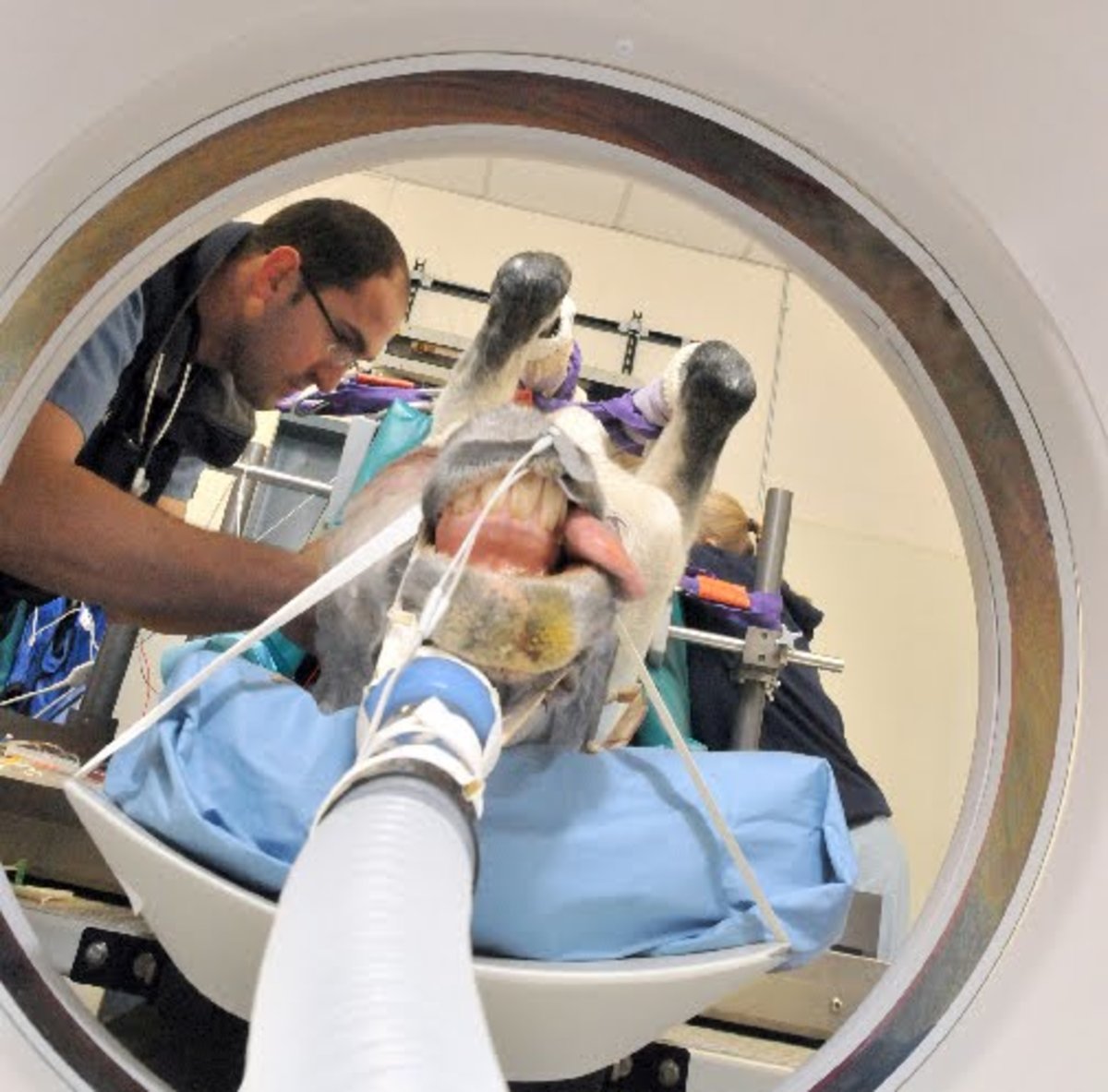[VIDEOSINGLE type=”youtube” keyid=”sLydN-EJKYk”, width=”560″, height=”344″]
It’s that time of year. It’s always a good sign when you’ve made it through February without any colic problems in your barn. Everyone always warns about what they call “winter colic” as winter is coming on, but the problems that cause colic–not drinking enough water, too little or irregular exercise, disruptive changes in routines because of weather, and all the rest–can have cumulative effects. The colic warning signs might not be obvious right away, but if you have problems, you’ll know it by the time? February comes. And making it through doesn’t mean the risk is over, but horses should soon be getting back to more active schedules and be less impacted by inclement weather.
Nevertheless, some unfortunate horses and owners will be headed to local vet hospitals or regional university clinics and some will find out that it is necessary to have surgery. Colic surgery is very common now, and you might hear about it all the time, but you’ll hear about the intestinal details. Most owners won’t hear about the anesthesia that will be needed for their horses to undergo the surgery, or the induction process and recovery protocol that the hospital uses.
Anesthesia is nothing to be afraid of, but the vet clinic staff will get very serious as they hand you the permission forms for your horse before any surgical preparation can begin. It’s not unlike the process you’d go through at a hospital for a family member who needs surgery, but many horse owners are completely unaware of what anesthesia means for a horse, and there is very little information available to them to find out before they’re in a highly-charged, emotional situation as their horse faces a serious problem.
That’s why I put together this blog post, and I hope you’ll watch these videos even if you think your horse will never, ever be a candidate for surgery. Anesthesia does have its risks–everyone has heard the horror stories about horses emerging from an anesthetic haze in a panic–but modern veterinary medicine has developed protocols to make it as safe as possible for your horse.
Every hospital uses a slightly different system, depending on their available space, equipment and staff on hand. Sometimes emergency surgery is done on with no time to spare, and perhaps little time to explain to the owner what is going on. And in the middle of the night, no one may be around to hold your hand…or keep you from biting your nails off.
Ah, but the University of Minnesota College of Veterinary Medicine has prepared this little video, which is relevant whether your horse is having orthopedic surgery, colic surgery, or some other procedure that requires surgical procedures.
In the Minnesota video, you will be guided by Ronald Mandsager DVM, DACA. “DACA” means that Dr. Mandsager is a Diplomate of the American College of Veterinary Anesthesiologists.

The term “anesthesia” technically covers general anesthesia (meaning that the horse is rendered unconscious), as well as other anesthetizing methods such as standing sedation and the more common local anesthesia, which prevents the horse from feeling pain in a specific area of its body, such as part of a lower limb during lameness diagnosis.
General anesthesia makes it possible for the horse to be worked on in a recumbent (on its back) position in a sterile environment. An anesthesia assistant will monitor the horse and the anesthesia administration system while the surgeon and assistants concentrate on the procedure.
Horses scheduled for high-field MRI scanning, in which the horse has to be lying down, will also need general anesthesia. Standing MRI scans require sedation.
[VIDEOSINGLE type=”youtube” keyid=”Iv7yI0pduik”, width=”560″, height=”344″]
In Kentucky, the always-busy Rood and Riddle Equine Hospital‘s surgery schedule runs like clockwork, and the equine anesthesia process is a team project, both in induction and recovery. The team members know what is normal, and what’s not. Notice how much of the Rood and Riddle protocol in this video mirrors the Minnesota plan, but has its own variations.
You can expect some slight variation wherever your horse may be hospitalized.
I hope you never need this information, but it’s good to know. If you can, attend an open house at your local vet hospital or at a regional university equine hospital. Chances are, they will demonstrate or show videos of how they administer anesthesia, and you’ll have a chance to ask plenty of questions that you can file away for “what if…” use. You might want to ask about anesthesia for older horses, or miniature horses, if that is relevant for you, or what might be different for foals, and the staff will have time for answers.








